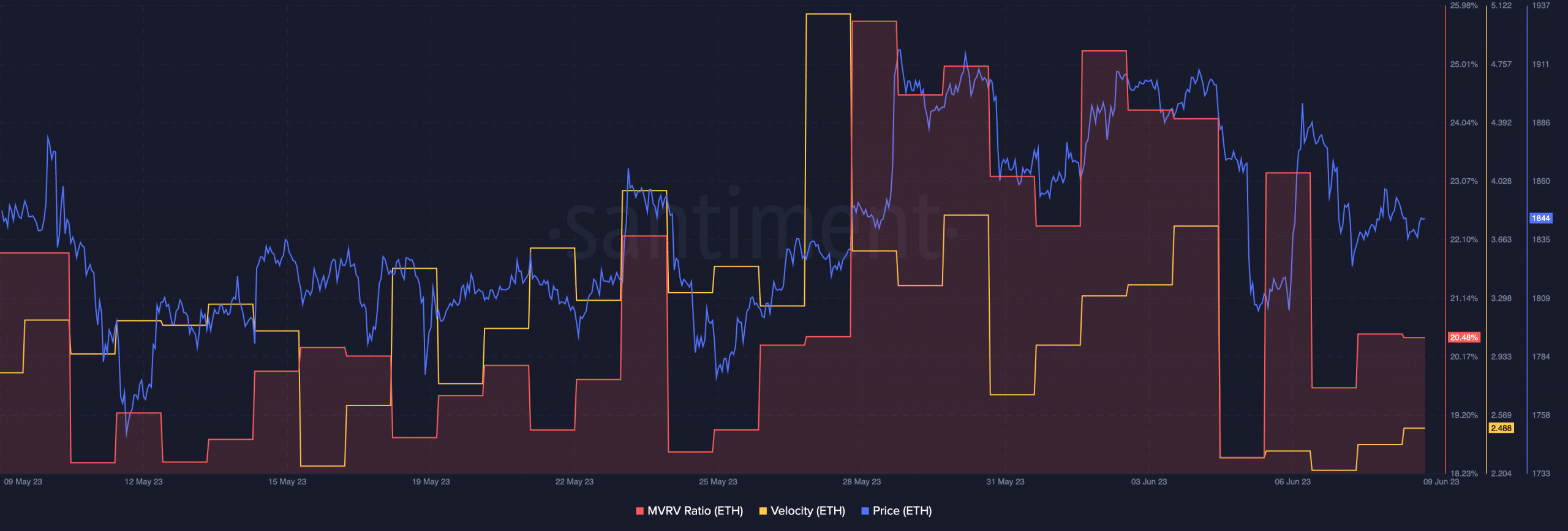The how and why of Ethereum’s latest update

- Ethereum developer proposed final changes to add to the Cancun upgrade.
- ETH’s price soared alongside its velocity.
The new Cancun update that is supposed to be launching on Ethereum [ETH] has been a huge subject of discussion for developers over the last few months. Recently, in the “All Core Developers Consensus Call”, many details of the update were finalized.
Is your portfolio green? Check out the Ethereum Profit Calculator
Developers come to an agreement
The main topic of discussion was about blobs. Blobs are chunks of data that can be added to the Ethereum blockchain. An Ethereum developer named Dankrad Feist conducted an experiment to test how well the Ethereum network can handle large blocks with additional data.
Feist found that the Ethereum network successfully processed blocks with 128 kB to 1 MB of extra data without causing any problems. He tested factors like bandwidth usage, block speed, and missed attestations. Everything remained stable regardless of block size.
However, there was one instance where a block carrying 1 MB of additional data caused a temporary reorganization of the blockchain.
Based on the experiment, Feist suggested making some changes. He recommended increasing the maximum number of blobs per block from 4 to 6, as specified in EIP 4844. He also suggested reevaluating the deadline for receiving blocks within a certain time frame.
Next, the participants discussed making modifications to EIP-4788. This EIP allows the Beacon block root to be visible in the EVM (Ethereum Virtual Machine). The suggestion was to restrict the quantity of block roots stored on the EL (Execution Layer) to control the growth of the blockchain’s state.
Though implementing this change would require EL clients to perform additional disk writes, everyone in the discussion agreed that it was a necessary adjustment.
The team made plans to launch a new testnet called Holesky, which will serve as an alternative platform for implementing changes to the beacon chain. The main goal of Holesky is to run a larger number of validators compared to the mainnet. This will enable them to perform stress tests and evaluate any modifications related to the Beacon chain.
State of ETH
These developments could have a positive impact on the price of ETH in the future. At press time, ETH was trading at $1,845.16 according to CoinMarketCap.
Realistic or not, here’s ETH market cap in BTC’s terms
Its price grew over the last few days, along with its velocity. This indicated that the number of ETH transfers were increasing. However, the MVRV ratio for ETH grew in tandem with its price. The growing MVRV ratio implied that ETH was slightly in the overbought zone at the time of writing.





![Three days ago, Uniswap [UNI] attempted a breakout from a parallel channel, surging to hit a local high of $7.6. However, the altcoin faced strong rejection.](https://ambcrypto.com/wp-content/uploads/2025/06/Gladys-83-400x240.jpg)

